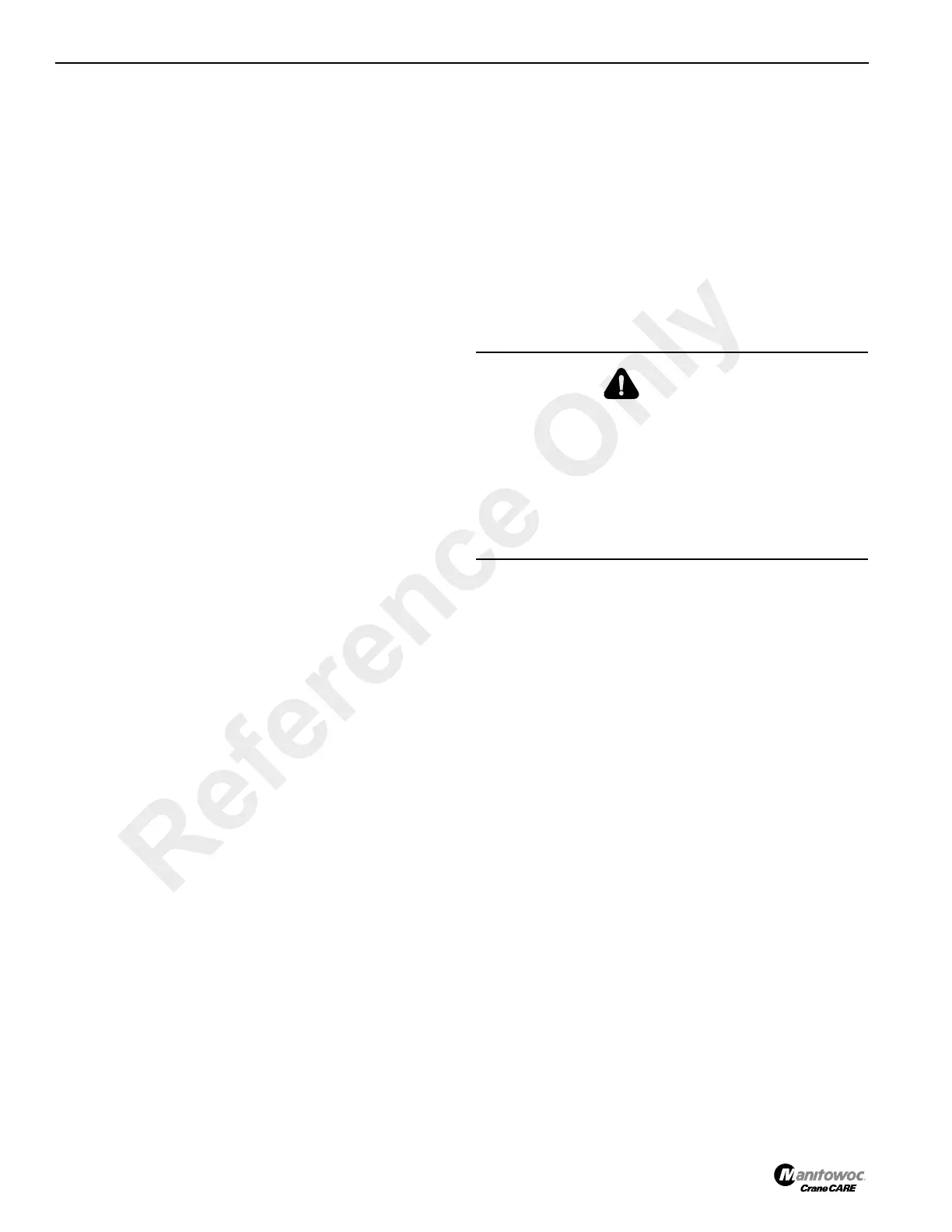CD5515-2/YB5515-2 SERVICE MANUAL
9-18 Published 1-20-2017, Control# 483-02
14. Remove lining and piston assembly 22 from housing 26
bore. Remove O-rings 18 from the lining and piston
assembly.
15. Lubricate all rubber components in clean hydraulic oil.
Use the same type as used in the hydraulic system.
Keep the linings free of oil, grease and solvents.
16. Clean all parts and housing bore thoroughly with a
suitable solvent and then coat them with clean hydraulic
oil of the same type used in the hydraulic system. Keep
all parts free of contaminants, dirt and debris.
NOTE: Coat the surfaces Figure 9-26 with a Lithium Base,
E.P. No. 2 bearing grease or equivalent.
17. Install new O-rings 18 on lining and piston assembly 22
and insert the assembly into housing 26 bore.
18. Carefully install two new seals 28 in housing 26. Be sure
to install the seals the same direction as they were
removed.
19. Install new O-rings 13 and 16 and new backup rings 14
and 17 on piston 15. Be sure they are installed in the
correct order.
20. Install piston 15 into housing 26 bore. Be sure piston is
installed in the correct direction. Be careful not to pinch
the O-ring on the inlet ports.
21. Install new backup ring 10 and new O-ring 11 on piston
9. Be sure they are installed in the proper order. Install
push rod 12 in bore of piston 9. Install piston into
housing 26 bore.
22. Fully lubricate the threads of adjusting screw 7 and lock
nut 8 and install into cover 3.
NOTE: Completely lubricate belleville springs with a light
coat of Lithium Base, E.P. No. 2 bearing grease.
23. Install washer 6, if used, and belleville springs 5 over
end of piston 9. Follow the stacking sequence
Figure 9-28.
24. Install new seal 4 in cover of 3. Be sure inside of cover is
coated with grease.
25. Inst
all new gasket 23
, cover 3, lockwashers 2 and
capscrews 1. Tighten the screws evenly in the order of
A, B, C and D Figure 9-27. When installed, tighten each
screw to a torque of 29,8 - 36,6 Nm (22-27 lb-ft).
26. Assemble the brake assembly onto the mounting
bracket 31.
27. Install the parking brake assembly onto the frame of the
crane.
28. Attach the hydraulic hose.
29. Adjust the lining clearance as described on page 9-7.
30. Open the accumulator needle valve and then bleed air
from the system as described on page 9-6.
NOTE: The needle valve must be in the open position for
the brake system to operate properly. If it is not
open, the charging pump will cycle every time the
brake pedal is depressed and if the crane’s engine
stops there may not be enough pressure to stop
the crane.
BRAKE MODULATING VALVE REPAIR
Removal
1. Raise the crane by lowering the outriggers.
2. Install jack stands under the frame of the crane.
3. Shut off the engine and set the parking brake.
4. Press the foot brake pedal (brake modulating valve) as
many times as it takes to release any pressure
remaining in the brake system.
5. From underneath the operator’s cab, disconnect the
hydraulic hoses from the fittings. Plug the hoses to
prevent contaminating the hydraulic system.
6. Remove the three capscrews and self-locking nuts
securing pedal mounting plate to the cab floor. Remove
the brake modulating valve and pedal assembly.
Disassembly
1. Remove the brake modulating valve from the pedal
assembly, by removing two capscrews 13 Figure 9-29.
2. Remove boot 1 from piston 2 and housing 12.
3. Remove piston 2, springs 3, 4 and 5, shims 6 and
retainer assembly 7 from housing 12.
NOTE: Observe and take note of the number of shims 6
being removed from the housing.
4. Carefully remove cup 14 and seal 15 from housing 12
bore. Be careful not to scratch or mar the bore.
WARNING
A raised and badly supported crane can fall on you
causing severe injury or death. Position the crane on a
firm, level surface before raising one end. Ensure that the
other end is securely chocked. Do not rely solely on the
crane’s hydraulics or jacks to support the crane when
working under it.
Disconnect the battery cables while you’re under the
crane to prevent the engine from being started.
Reference Only

